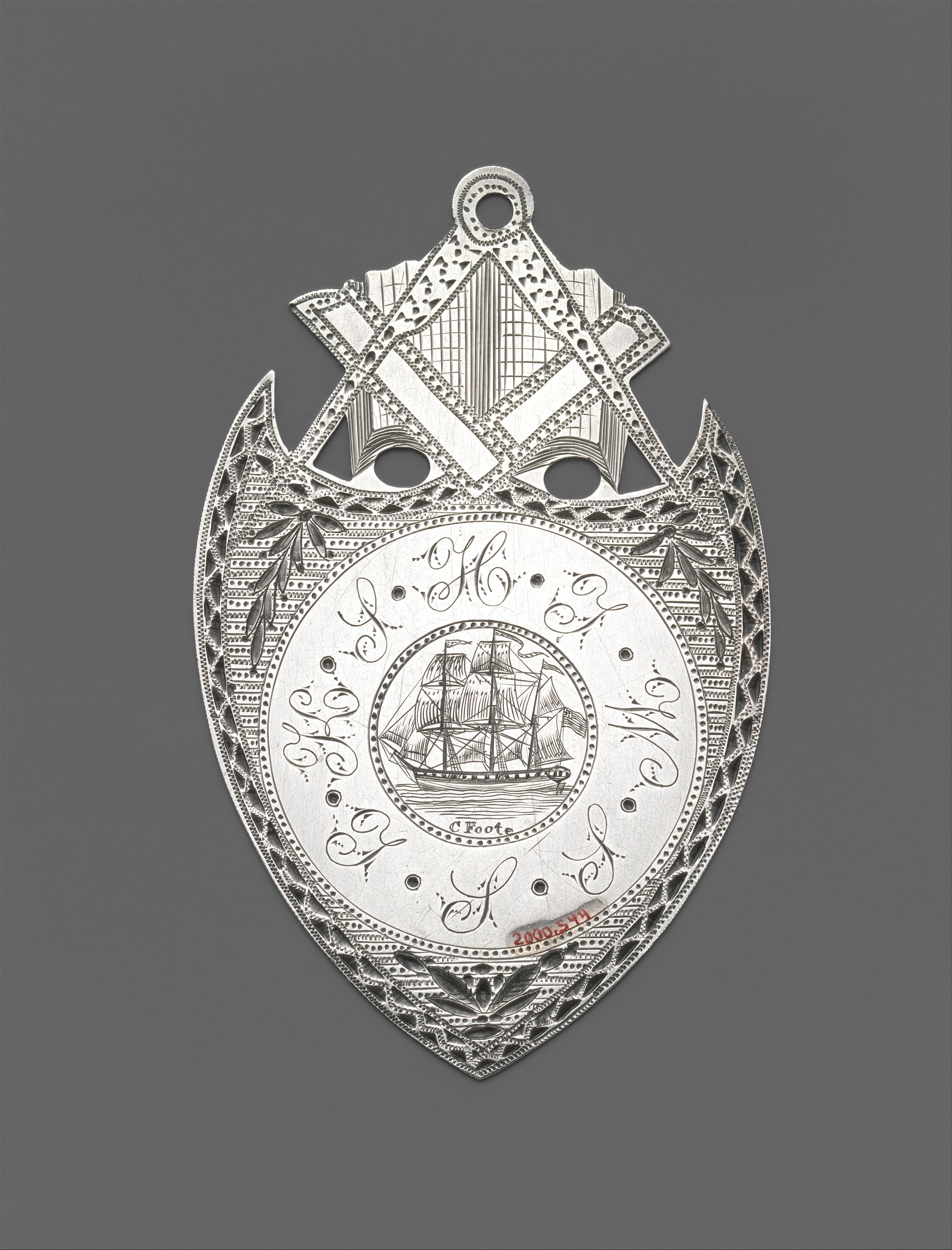Masonic Medal
Possibly engraved by C. Foote American
Fraternal societies of freemasons, first introduced into the American colonies around 1730, became increasingly popular following the Revolutionary War. The enthusiasm for Freemasonry went hand in hand with a growing interest in the Enlightenment and with ideals of equality. Having developed originally out of craft guilds, Freemasonry often adopted symbols of the crafts—for instance the architect's square as a symbol of virtue—as well as religious and heraldic devices. Jewelry formed an important part of the regalia. This shield-shaped silver medal was made as a personal jewel for Lockwood N. DeForest, a member of Jerusalem Chapter No. 13 of Bridgeport, Connecticut. It is engraved with various masonic devices and scripts, as well as with DeForest's own emblem of a three-masted schooner flying a pennant and the American flag and the date June 8, 1826. The signature of the engraver, C. Foote, appears below the sailing ship.
Due to rights restrictions, this image cannot be enlarged, viewed at full screen, or downloaded.
This artwork is meant to be viewed from right to left. Scroll left to view more.




